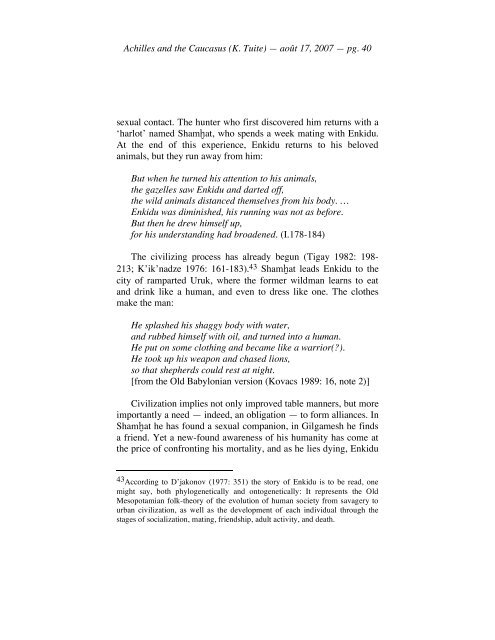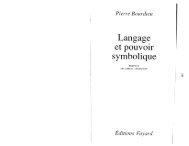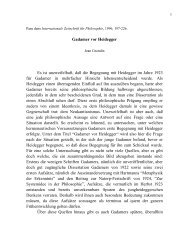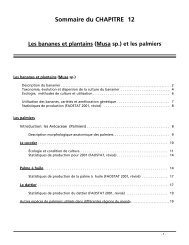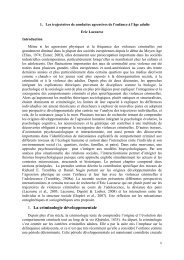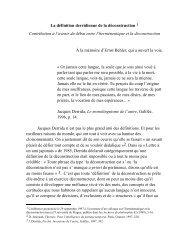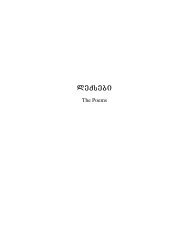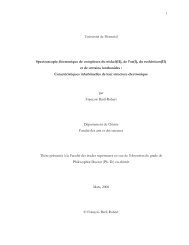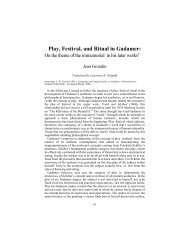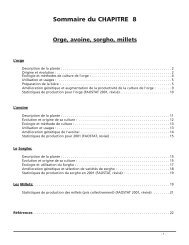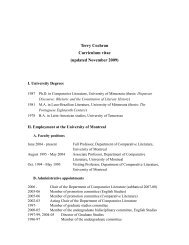Achilles and the Caucasus - Université de Montréal
Achilles and the Caucasus - Université de Montréal
Achilles and the Caucasus - Université de Montréal
Create successful ePaper yourself
Turn your PDF publications into a flip-book with our unique Google optimized e-Paper software.
<strong>Achilles</strong> <strong>and</strong> <strong>the</strong> <strong>Caucasus</strong> (K. Tuite) — août 17, 2007 — pg. 40<br />
sexual contact. The hunter who first discovered him returns with a<br />
‘harlot’ named Shamḫat, who spends a week mating with Enkidu.<br />
At <strong>the</strong> end of this experience, Enkidu returns to his beloved<br />
animals, but <strong>the</strong>y run away from him:<br />
But when he turned his attention to his animals,<br />
<strong>the</strong> gazelles saw Enkidu <strong>and</strong> darted off,<br />
<strong>the</strong> wild animals distanced <strong>the</strong>mselves from his body. …<br />
Enkidu was diminished, his running was not as before.<br />
But <strong>the</strong>n he drew himself up,<br />
for his un<strong>de</strong>rst<strong>and</strong>ing had broa<strong>de</strong>ned. (I.178-184)<br />
The civilizing process has already begun (Tigay 1982: 198-<br />
213; K’ik’nadze 1976: 161-183). 43 Shamḫat leads Enkidu to <strong>the</strong><br />
city of ramparted Uruk, where <strong>the</strong> former wildman learns to eat<br />
<strong>and</strong> drink like a human, <strong>and</strong> even to dress like one. The clo<strong>the</strong>s<br />
make <strong>the</strong> man:<br />
He splashed his shaggy body with water,<br />
<strong>and</strong> rubbed himself with oil, <strong>and</strong> turned into a human.<br />
He put on some clothing <strong>and</strong> became like a warrior(?).<br />
He took up his weapon <strong>and</strong> chased lions,<br />
so that shepherds could rest at night.<br />
[from <strong>the</strong> Old Babylonian version (Kovacs 1989: 16, note 2)]<br />
Civilization implies not only improved table manners, but more<br />
importantly a need — in<strong>de</strong>ed, an obligation — to form alliances. In<br />
Shamḫat he has found a sexual companion, in Gilgamesh he finds<br />
a friend. Yet a new-found awareness of his humanity has come at<br />
<strong>the</strong> price of confronting his mortality, <strong>and</strong> as he lies dying, Enkidu<br />
43 According to D’jakonov (1977: 351) <strong>the</strong> story of Enkidu is to be read, one<br />
might say, both phylogenetically <strong>and</strong> ontogenetically: It represents <strong>the</strong> Old<br />
Mesopotamian folk-<strong>the</strong>ory of <strong>the</strong> evolution of human society from savagery to<br />
urban civilization, as well as <strong>the</strong> <strong>de</strong>velopment of each individual through <strong>the</strong><br />
stages of socialization, mating, friendship, adult activity, <strong>and</strong> <strong>de</strong>ath.


